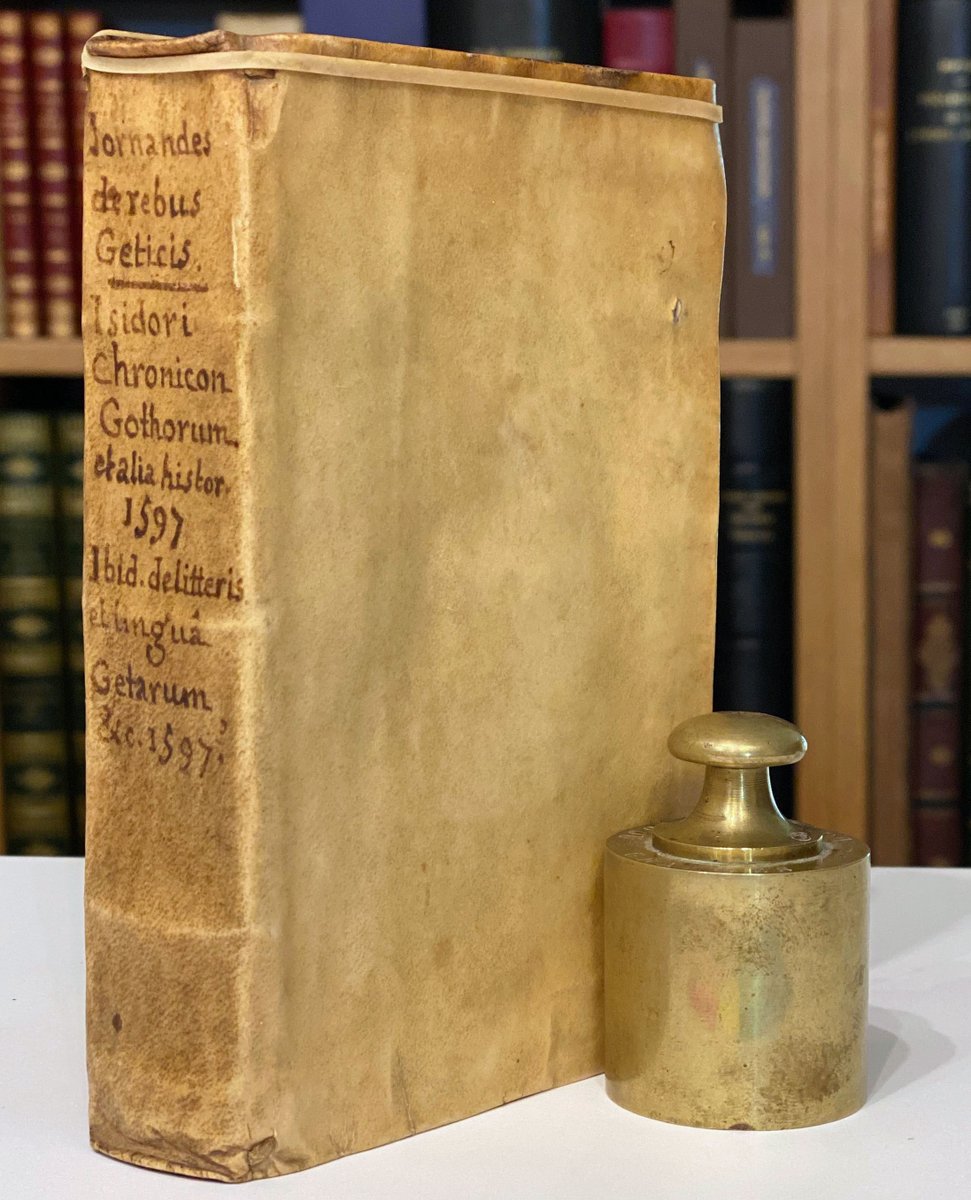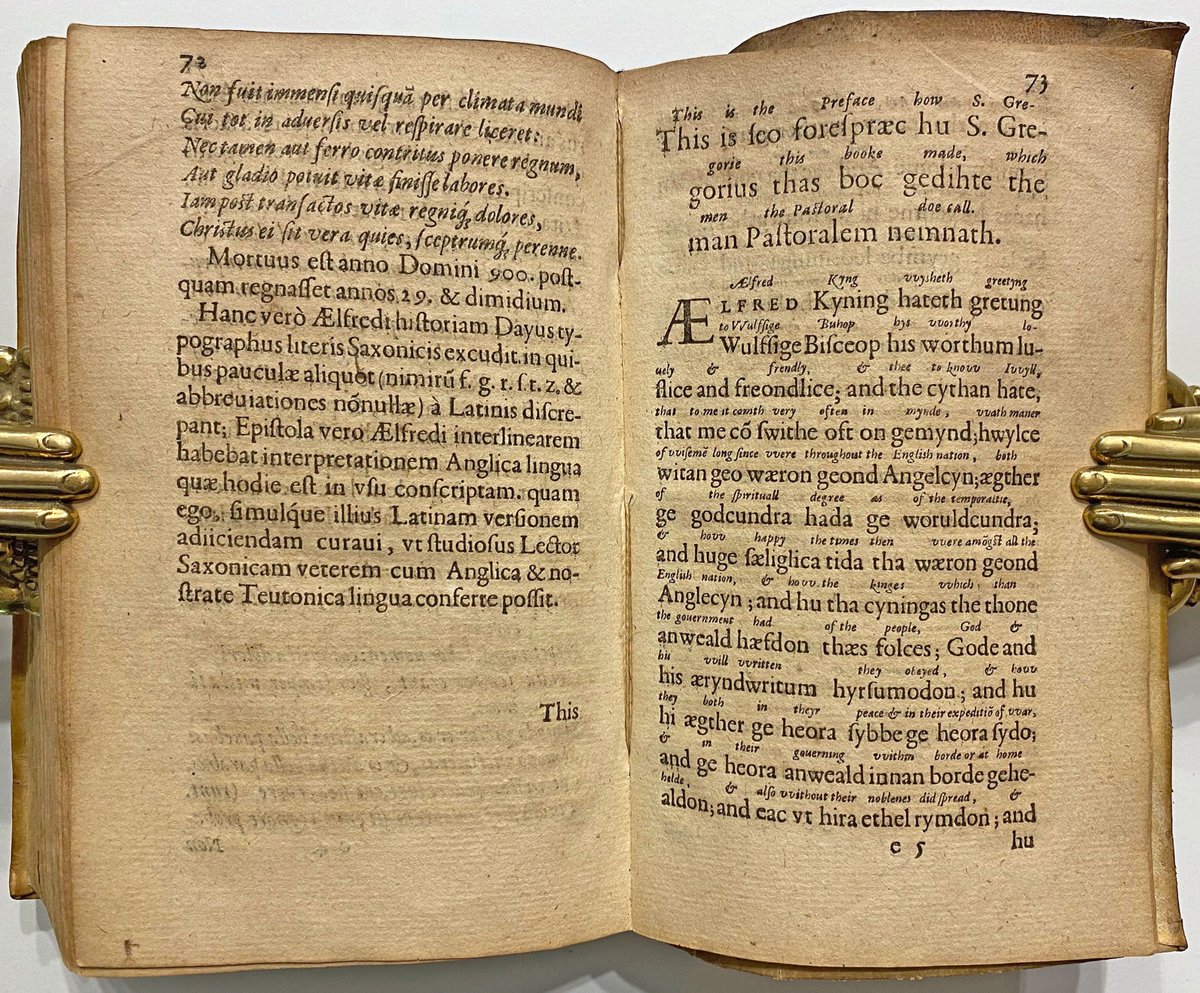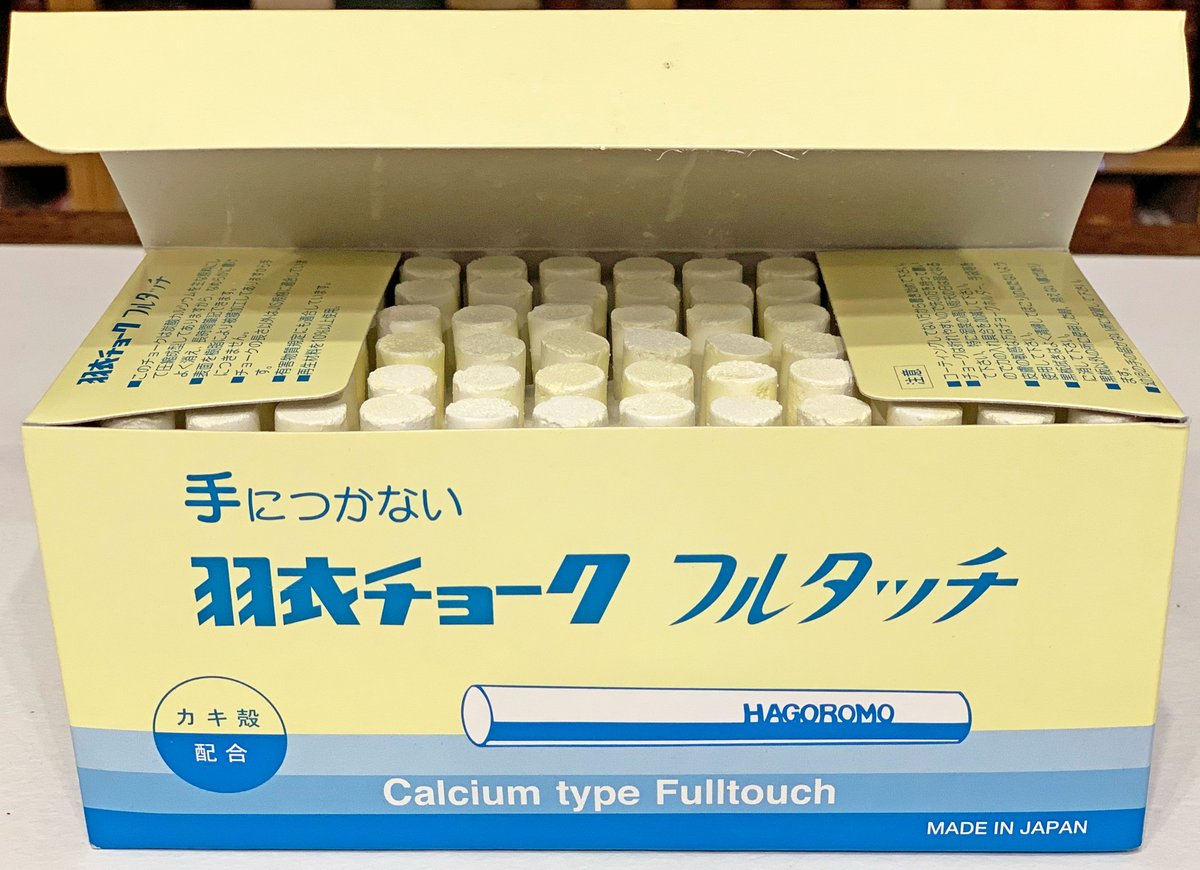
Bonaventura Vulcanius’ De literis et lingua getarum, sive gothorum [On the Alphabet & Language of the Getae or Goths], published in Leiden in 1597, contains texts & wordlists in Gothic, Crimean Gothic, Anglo-Saxon, Frisian, Persian, Welsh, Icelandic, Basque, Romani & Rotwelsch. 



In this pioneering work of comparative linguistics, Vulcanius attempted to define the relationship between the Gothic language and High German, Crimean Gothic (after Busbecq's vocabulary, first published eight years previously in 1589), Anglo-Saxon and Frisian. 

At the same time, he also considered the Persian, Welsh, Icelandic and Basque languages. When the book went to press, what would otherwise have been blank space at the end of the last gathering was filled with a Romani and a Rotwelsch wordlist. 





Vulcanius had access to the silver-on-purple codex containing the ancient Gothic translation of the Bible by Bishop Wulfila, and this book includes an extract - the first ever publication of a Gothic text. He gave the ms the name by which it is still known today: Codex Argenteus. 

Vulcanius presents a vocabulary & a brief song extract - shown below - of the variety of Gothic observed in the Crimea by the diplomat Ogier de Busbecq, and first published in his account of his embassy to Turkey in 1589. This is the only attestation of Crimean Gothic to survive. 

Immediately following the language specimens of Gothic and Old High German, Vulcanius proceeds with Old English - part of Alfred’s Preface to the Pastoral Care. He informs the reader that he had heard of many Anglo-Saxon manuscripts still extant in English archives and libraries. 

The printer Raphelengius did not possess any Anglo-Saxon typefaces, and Vulcanius apologizes for the fact that the text, notably the f, g, r, s, t, and z (he means the yogh), as well as a number of abbreviations, had to be substituted in his specimen by ordinary Latin characters. 

• • •
Missing some Tweet in this thread? You can try to
force a refresh

























